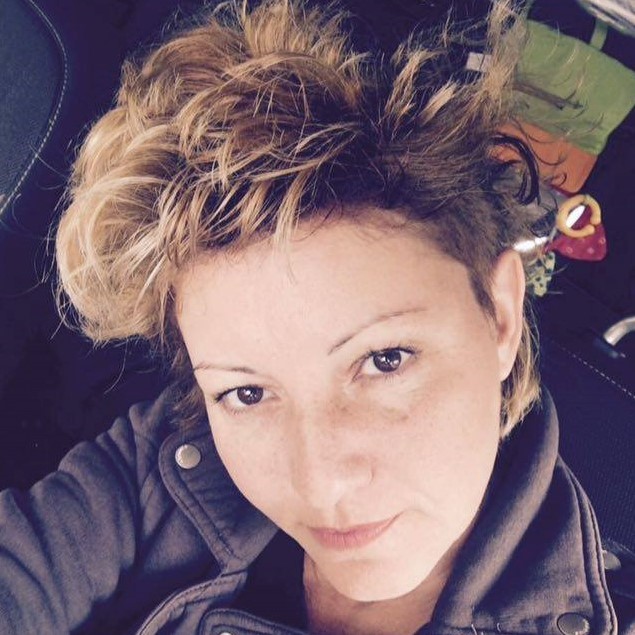- Home
- Rokdim Nirkoda 115
- Tehom Rabbah – The Great Deep
Tehom Rabbah – The Great Deep
Jerusalem Dance Theater* A Performance Created by Relating the Biblical Flood Story to the October 7th War
- Translation: Dena Matmon
At the end of the day, a person is left “naked as the day he was born”.
For how much longer can we hide from ourselves?
How will we be able to feign normalcy, when we dress in the morning in our button-down shirt? In our black moccasins polished to perfection and our sharply creased trousers?
– “How are you?” one of the neighbors will ask, when we leave the house and go into an egotistical and stylish world.
– “Everything is excellent!” we will respond deceitfully. We will smile a small smile for him out of the side of our mouth and go on our way. We will continue on our path, perhaps a true path, perhaps a false one, one which significantly distorts our inner reality. A path studded with misshapen plastic flowers that will never wilt, but also will never grow upwards or change their distorted shape; a mistaken path that masquerades as our path of faith.
In spite of all this, at the end of the day, when darkness falls, just as we enter the parking lot, and turn off the engine of the new car we received from the company, we will put the jam-packed datebook into the briefcase and climb the steps to our home – the same house that will accept us despite the false hardships of that day. We’ll open the door, go into our small room, take off the button-down shirt we wore this morning, the sharply creased trousers and the shiny moccasins, and stand naked in front of the mirror.
As naked as the day we were born.
And there, in front of the mirror, we will reveal to ourselves who we really are.
There, in front of the mirror, we’ll walk on paths studded with real flowers, not plastic ones; flowers that change their distorted shape to a large and colorful truth, an evolving truth.
But, only when we are naked, there, in front of it, will come the true faith from which we can grow. We will look deeply at ourselves, at our bare hands, the soles of the feet. We’ll look within ourselves with our eyes, and only then will we be free of all lies and deceit, naked as the day we were born.
In the opening act of “The Great Deep”, a person moves another person. One dancer moves the other dancer with circular and coordinated movements in a wondrous way. Both of them look like they are dancing on the full stage. In spite of the fact that they are only two, they use the stage freely and the synergy between them is perfect. Body to body, chest to back. They are wrapped in skin-tight, flesh-colored outfits that make them appear nude; as if they didn’t exist. And there’s no ego. It just isn’t there.
There is room for a third dancer, who joins them for this exposed and open dance,
and in an instant, the dance becomes an intriguing trio which, in its naked way, causes the strong opinions that the dancer held all his/her life to crumble, and the relationships seem even closer.
In the center of the stage, behind the dancers, the musicians Tami Casanova and Yuval Admoni play on two impressive grand pianos. They accompany the dancers with tremendous coordination, skill and sensitivity.
The music continues for the entire length of each dance act in the performance, but a few minutes before the end of the last act, the pianos go quiet and the music stops while the dancers continue their movement. Just a few more movements. And precisely in those few quiet moments, with the audience watching with great curiosity, I felt how exposed the dancers were on the stage, and how each movement was so much louder, screaming out in the silence.
The next act features a dance solo, performed by a very versatile dancer, whose body compliments the idea of the choreography and its execution. I felt that the upper body of the dancer could be broken down into pieces and be resewn back together at his whim. I was very curious about the idea behind this solo dance. At a certain point in the choreography, the dancer laid down on his back on the hard, wooden stage and began to tremble. The trembling began with his fingers and continued to spread, throughout his limbs, to all parts of his body. The obsession of movement appeared unstoppable, as if he were an unmedicated epileptic.
As every part of the dancer’s body trembled, something happened to my body as well. On the one hand, I trembled together with him, as a sign of my identification with him and the influence he had upon me; I even feared he might lose control. On the other hand, something in me wanted to get up and calm him; to show him that soon, everything would be alright. This was a well rounded and soft choreography, combined with sharp, frantic movements, movements that I felt truly expressed human suffering.
The dance performance: “The Great Deep” integrates additional colorful and intriguing elements. During the entire performance I felt that something was about to happen – a feeling that remained with me until the end.
This choreographic conception and its performance on stage made me wonder about the significance of a person’s intentions, of the clear truth and the ability to be exposed to the world with no ego.
· Hanoch Ben Dror, one of the best known and valued dancers in the country, returns to the stage 20 years after leaving the field of dance in order to immerse himself in youth education and philosophy, this time, with a new creation for the Jerusalem Dance Theater that integrates different worlds.
· The Jerusalem Dance Theater was founded 40 years ago by Ms.Tamara Mielnik, recognized as an Honorary Citizen of Jerusalem and recipient of the Education Ministry Prize.









Comments
התראות